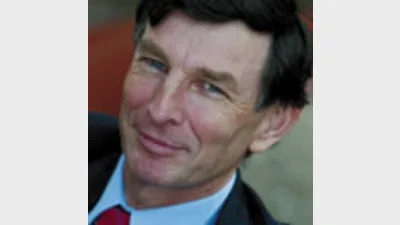Why central bankers need to take a back seat



 One of the great risks to the world’s economy is the irresponsible actions of central bankers, according to Robert Keavney. He argues they will give pain, but no gain.
One of the great risks to the world’s economy is the irresponsible actions of central bankers, according to Robert Keavney. He argues they will give pain, but no gain.
In April 2007, after the Reserve Bank of Australia (RBA) had lifted rates, the Sydney Daily Telegraph displayed a large photograph of the face of RBA Governor Glenn Stevens on its front page, with the caption “Is this the most useless man in Australia?”.
We need not give much credence to the implied view that interest rates should never go up.
However, I wish to go further, and offer high praise to Governor Stevens. What has he done to deserve such praise? Not much – and that is the point. This is an article in favour of a healthy passivity by central banks.
The head of RBA does not appear to suffer delusions of grandeur; he does not seem to believe he is a superman called on to save the world or even capable of such a task; he does not suffer manic depression when it comes to interest rate settings.
All in all, he seems a man of the past, when central bankers were prudent and considered, and limited themselves to worrying about the stability of the banking system and trying to contain inflation within reasonable limits and not too much else. In other words, Governor Stevens appears to have not lost his mind.
This stands in clear contrast to the behaviour of Federal Reserve (Fed) Chairmen Alan Greenspan and Ben S. Bernanke. What the inflation markets should be most worried about is inflation of the egos of American central bankers.
The god of markets
This began during the period called the ‘Great Moderation’, though it should have been called the ‘temporary bubble of the late 1990s’. For a period, Wall Street applied the nickname “God” to Fed chairman Alan Greenspan.
The rationale for this idiotic sycophantism was that many market participants believed that the then prevailing bull market was caused by the Fed’s interest rate settings. And it was expected that, at the first hint of a downturn in equity markets, Greenspan would slash rates to send markets back to their upward trend – the “Greenspan put”.
History has shown this expectation to be drivel. It was just another version of “this time it's different.” Subsequently, as markets fell, rates were cut all the way to virtually zero – yet equity markets have remained weak.
Nonetheless, during the boom, central bankers began to be seen as all powerful in managing the economy. Then, Ben Bernanke assumed the ‘all powerful’ seat of Fed chairman.
Bernanke clearly believes the Fed should take a leading role in managing the economic crisis, and that it is equipped to do so. Thus, we have seen rates reduced to near zero, Quantitative Easing (QE) 1 and 2, Operation Twist, etc. Further, Bernanke tells us that the Fed has many other arrows in its quiver.
It is all vanity; all froth and no beer; all pain with no gain.
Rational expectations
“Rational expectations are where people in the economy and investors actually think a little bit, and cannot simply be repeatedly fooled, misled, and hoodwinked by policymakers and central bankers to believe things that constantly contradict the evidence, the reality, history, and rational thought.”
These words are from Erik Metanomski, chairman of Lanyon Asset Management. From the beginning of the global crisis, Metanomski foresaw that the panic of authorities would lead them to take extreme actions, which would ultimately prove counterproductive. He has been warning of this – whenever he could get a podium – since 2007. Unfortunately, he is being proved correct.
As Metanomski points out, most of the ‘rescues measures’ implemented by the Fed were implemented without any historical evidence of their effectiveness. To the contrary, in many cases history suggested they would be ineffective.
Consider the example of quantitative easing. Japan engaged in quantitative easing on a grand scale for a half decade from March 2001. It has been an abject failure.
Seemingly, the Fed philosophy is “It didn’t work in Japan so it must work here.”
QE failed in Japan and America for the same reason. The economy was constrained by lack of consumer demand. Consequently, businesses and consumers were not borrowing. QE made significantly greater funds available for borrowing. This proved pointless in the face of lack of demand for loans.
Richard W. Fischer, president and chief executive officer of the Federal Reserve Bank of Dallas, has dissented from the view of the majority of his colleagues on the Fed. In a speech on 17 August 2011 called Connecting The Dots, he argues:
“I have posited both within the Federal Open Market Committee and publicly for some time that there is abundant liquidity available to finance economic expansion and job creation in America.
The banking system is awash with liquidity. It is a rare day when the discount windows – the lending facilities of the 12 Federal Reserve banks – experience significant activity.
Domestic banks are flush; they have on deposit at the 12 Federal Reserve banks some $1.6 trillion in excess reserves, earning a mere 25 basis points – a quarter of 1 per cent per annum – rather than earning significantly higher interest rates from making loans to operating businesses. These excess bank reserves are waiting on the sidelines to be lent to businesses.
Non-depository financial firms – private equity funds and the like – have substantial amounts of investable cash at their disposal.
US corporations are sitting on an abundance of cash – some estimate excess working capital on publicly traded corporations’ books exceeds $1 trillion – well above their working capital needs.
Non-publicly held businesses that are creditworthy have increasing access to bank credit at historically low nominal rates.”
The point being made by Fisher is that there is no shortage of funds available for borrowing, so how can it make any difference to make more funds available? The problem is over-indebtedness and consequent lack of demand. The Fed, like the Bank of Japan, tried to address this by facilitating more borrowing. It is like using fire hoses to assist in an area suffering floods.
The Fed has greatly weakened its balance sheet for no enduring benefit to the economy. The money base has been greatly expanded, for no purpose.
If Bernanke had a realistic assessment of his and the Fed’s capacity, he would go to Congress and the President and admit that there is nothing the Fed can do. Unfortunately, American central bankers are not so modest, or realistic, about what is in their powers.
You expect politicians to make decisions which make them look good in the short-term without consideration of the long-term consequences, but you don't expect it of central bankers. However, this is happening in America.
They should take lessons from Glenn Stevens. Restraint is a laudable attribute for central bankers.
(It should be noted that the Australian economy has not been put under stress like the US. If that should occur, it is to be hoped that the RBA does not become infected with the American disease.)
Before leaving this subject we can note the wild swings in US interest rate settings over the past decade. Fed rates have fluctuated over a 6.2 per cent range over the past decade. This is about 2 per cent more than the range in Australia. The Fed has been manic depressive in its interest rate management.
Somehow the Fed managed to set rates at their cyclical peaks as America headed towards recessions in 2000 and 2007. This was entirely counterproductive.
Meanwhile, in Europe…
Julia Gillard has called for the Europeans to get their act together and fix the situation. Angela Merkel must be trembling.
Everyone, it seems, is calling on the Europeans to fix their situation – as if it could be fixed by a political decision.
A significant number of European nations have debts which seem beyond their capacity to repay. Many European banks are significantly exposed to those nations’ bonds and their banks. This puts the European banking system at risk. Euro countries are prevented from using tools such as allowing the currency to depreciate or printing money. How can this be ‘fixed’ by politicians?
Only after we give up the illusion that there is a good fairy who can wave a magic wand and make everything better will the world be ready to accept the necessity of going through substantial pain and suffering before a new normalcy emerges.
History repeating
Oliver Marc Hartwick, research fellow at the Centre for Independent Studies, wrote an interesting article in the Third Link Newsletter (October 2011) on the History of European monetary union. The Euro is not the first time European countries have adopted a common currency.
In the Nineteenth Century, Belgium, Switzerland, Italy, Greece, Bulgaria, Spain and Serbia either adopted the French franc or linked their currencies to it. This became known as the Latin Monetary Union (LMU). In that era of gold backed currencies, the LMU was based on having identical amounts of gold and silver in their coins.
You won’t be surprised to learn that the currency union failed and was disbanded in 1927.
In 1908, one country was expelled for cheating with the gold content of its coins. One guess as to who it was?
Greece!
History repeating – lessons not learnt.
Hartwick reports new evidence which suggests that France insisted on the adoption of the euro as a condition for its support for the unification of East and West Germany.
This, it was hoped, would prevent Germany from becoming the dominant nation in Europe. This hope has been disappointed. As have all the hopes for the Euro. If the Euro survives, Germany will be calling the shots.
Robert Keavney is an industry commentator.
Recommended for you
In this episode of Relative Return Insider, host Keith Ford and AMP chief economist Shane Oliver unpack the RBA’s decision to keep the cash rate on hold in the face of rising inflation and whether the governor’s hawkish tone is a sign of things to come.
In this episode of Relative Return Insider, host Keith Ford and AMP chief economist Shane Oliver discuss the September quarter GDP figures, which show Australia’s economy regaining momentum.
In this new episode of The Manager Mix, host Laura Dew speaks to Haley Devine, head of wealth management at MaxCap Group, to delve into private credit and commercial real estate.
In this new episode of The Manager Mix, host Laura Dew speaks to Benjamin Leung, head of systematic investments at Macquarie Asset Management, to understand the use of systematic investments.







